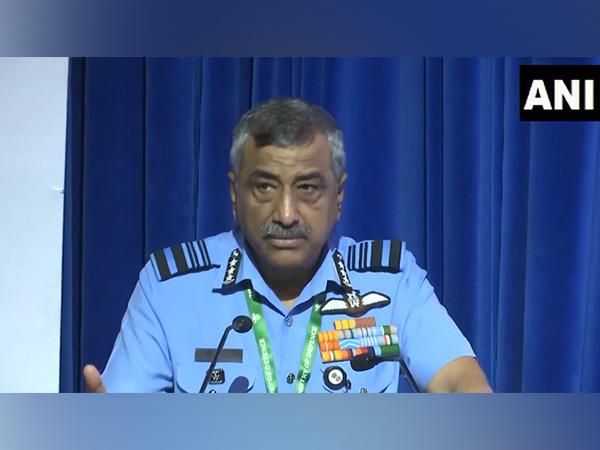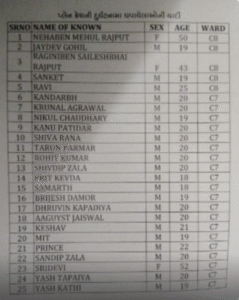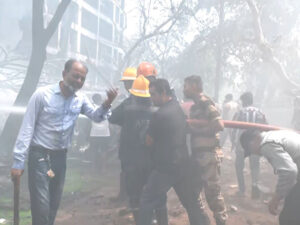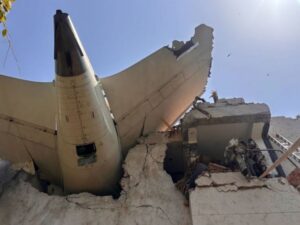“Decisive advantage in modern warfare lies in ability to see first, farthest, most accurately”: Air Marshal Ashutosh Dixit

New Delhi [India], June 11 (ANI): Air Marshal Ashutosh Dixit, Deputy Chief of Air Staff, on Wednesday highlighted the strategic role of surveillance and electro-optic systems in the current combat scenarios and said that the decisive advantage in modern warfare lies in the ability to see first, see farthest, and see most accurately.
Drawing parallels from recent global conflicts–including the Armenia-Azerbaijan war, the Russia-Ukraine conflict, and the ongoing Israel-Hamas hostilities–Air Marshal Dixit noted that superior situational awareness has consistently tipped the balance in favour of the side with better eyes on the battlefield.
Speaking at the Surveillance and Electro Optics India seminar, Air Marshal Dixit said, “When we look at global conflicts commencing from Armenia-Azerbaijan to Russia-Ukraine and Israel-Hamas, and to our own experiences in Operation Sindoor, one truth emerges with crystal clarity: the side that sees first, sees farthest and sees most accurately, prevails.”
“This axiom has guided military thinking for centuries, but never has it been more relevant than in our current era of precision warfare and multi-domain operations,” he added.
The Air Marshal referred to Operation Sindoor as a demonstration of India’s readiness to adapt to these evolving realities.
“This brings me to the critical importance of deep surveillance in contemporary warfare. The lessons from Operation Sindoor have reinforced what military strategists have long understood but perhaps not fully appreciated until now. Modern warfare, thanks to technology, has fundamentally altered the relationship between distance and vulnerability,” he said.
“It has given a new meaning to simultaneity and non-linearity. The existing principles of war are being challenged, and new ones are emerging. Earlier, the horizon marked the limit of immediate threat. Today, precision-guided munitions like SCALP, BrahMos and HAMMER have rendered geographical barriers almost meaningless, as strikes with BVR AAMs and supersonic AGMs have become commonplace.”
Air Marshal Dixit said that the rapidly advancing domain of surveillance and electro-optics is no longer just an operational enabler but has emerged as the very foundation of contemporary military strategy.
Reflecting on the significant transformation in the field, Air Marshal Dixit noted that these technologies have shifted from being supplementary force multipliers to becoming central to how nations plan, execute, and dominate in future conflicts.
“As someone who has witnessed this transformation firsthand, I can attest that we stand at the cusp of a revolution that will redefine how we perceive, process and project power in the 21st century,” he said.
He said, “When weapons can strike targets hundreds of kilometres away with pinpoint accuracy, he traditional concepts of front, rear and flanks combat zones and depth areas all become irrelevant. What we call the front and the theatre merge into one. This new reality demands that we extend our surveillance envelope far beyond what previous generations could have even imagined. We must detect, identify and track potential threats not when they approach our borders, but when they are still in their staging areas, airfields and bases, deep within adversary territory. This existed as a concept even earlier but today we have the means to realise it.”
Adding further, he said, “The compressed timelines of modern warfare amplify this need. When hypersonic missiles can traverse hundreds of kilometres in minutes and drone swarms can reach their targets before traditional decision-making processes can respond, real-time or near-real-time surveillance becomes not just advantageous but essential for survival.”
Air Marshal Dixit said that the speed of modern weapons has fundamentally altered the OODA loop, compressing it from hours to minutes, sometimes even seconds, and this new reality is being shaped by mega satellite constellations that are revolutionising battlefield awareness.
“The fusion of Electro-Optical, SAR and SIGINT capabilities now enables a 24×7 dynamic, persistent and predictive mosaic of the battlefield. We no longer merely observe; we anticipate, predict and pre-empt,” he said.
“As we look to the future, it becomes clear that government efforts alone cannot meet the pace of technological change we face. This is where our private sector emerges as a critical partner in our surveillance evolution. The dynamism, innovation and agility that characterise India’s technology companies are precisely what we need to maintain our edge in this rapidly evolving domain. We need our private sector to push the boundaries in several critical areas. Integration of AI with electro-optic systems has the potential to revolutionise surveillance capabilities. AI-driven imaging seekers, automated threat recognition and predictive analytics can transform passive monitoring into active. and intelligent surveillance that anticipates rather than merely observes,” he said.
He added, “The development of multispectral, all-weather surveillance systems that can operate effectively in our diverse geographical and climatic conditions is essential. From the Siachen glacier to the hot arid deserts down to the Indian Ocean, our surveillance systems must maintain effectiveness across all environments. We also need scalable and interoperable systems that can seamlessly integrate with existing military networks while remaining flexible enough to accommodate future technologies. The days of standalone, siloed systems are behind us. The future belongs to networked, collaborative platforms that multiply rather than merely add capabilities.”
Speaking at the seminar on national security, Lieutenant General Vineet Gaur, DG Capability Development, underscored the critical role of advanced surveillance in contemporary warfare.
“In today’s modern era, advanced surveillance is not a luxury but a necessity. We witnessed its significance during the Kargil conflict, and its relevance has only grown in today’s evolving security landscape,” he said.
He further emphasised the increasing importance of space-based surveillance, particularly as the Indian Air Force undergoes a transformative phase.
“We are set to launch 52 satellites in the coming year, out of which 31 will be built by private sector firms,” he revealed. These satellites will be equipped with cutting-edge camera lenses, advanced sensors, and a suite of modern technologies to enhance India’s situational awareness and defence preparedness.
Air Vice Marshal Tejpal Singh highlighted the indispensable role of advanced surveillance and technology in modern warfare, stating that enhanced battlefield imagery and superior monitoring capabilities have become vital components of military success.
“Advanced surveillance is no longer optional–it is essential in any modern conflict,” he said. “Clearer imagery and stronger surveillance systems provide a critical edge on the battlefield.”
He further stressed that Intelligence, Surveillance, and Reconnaissance (ISR) has emerged as a key element in today’s combat environment.
“ISR is central to modern-day warfare, and Remotely Operated Systems (ROS) serve as its backbone,” he explained, adding that the importance of these systems has been demonstrated in the ongoing Russia-Ukraine conflict.
Referring to developments in West Asia, Air Vice Marshal Singh pointed to the use of unmanned aerial attack systems in Yemen, which have drawn global attention.
“These examples show that ISR capabilities are vital for achieving dominance in today’s contested airspace,” he said. (ANI)
This story is not been edited by Take One Television & Digital Network Staff and is auto-generated from syndicated feed






